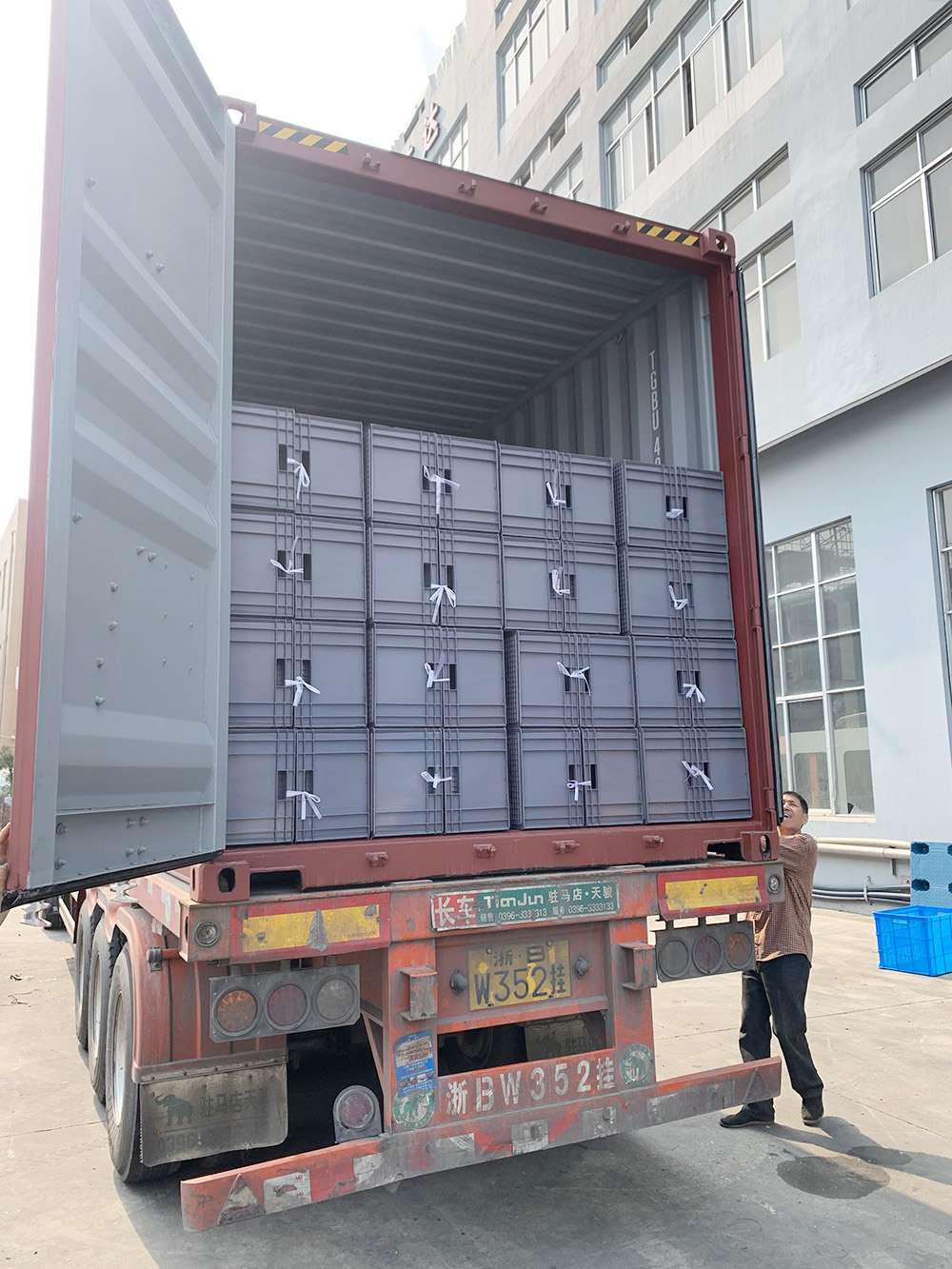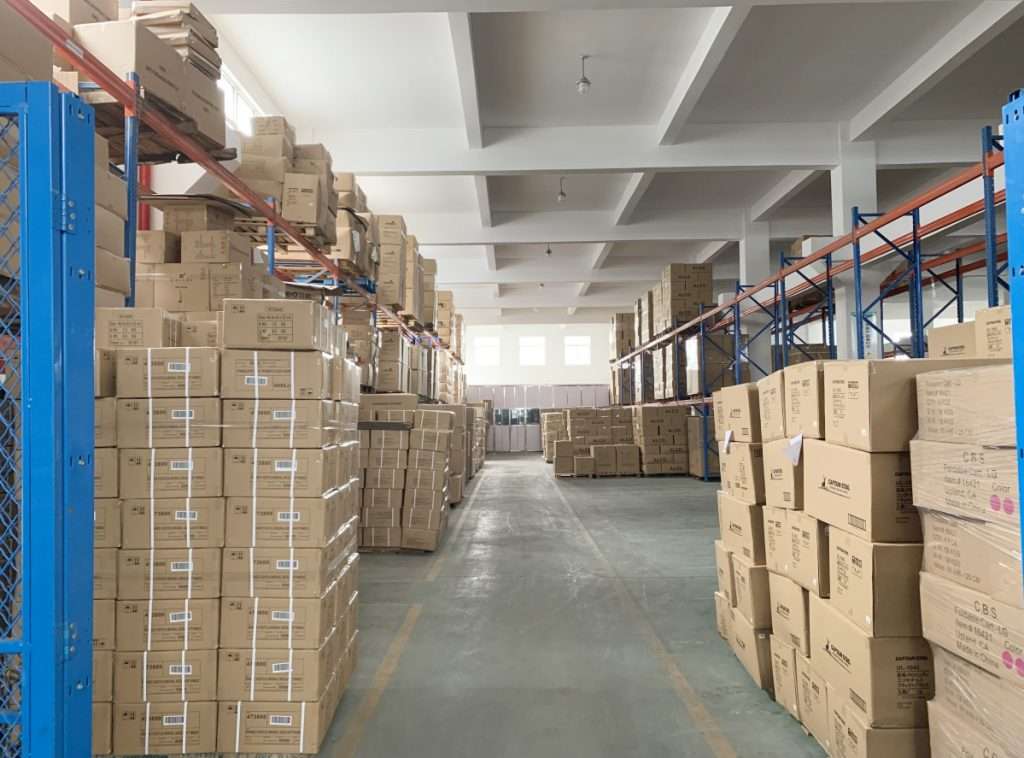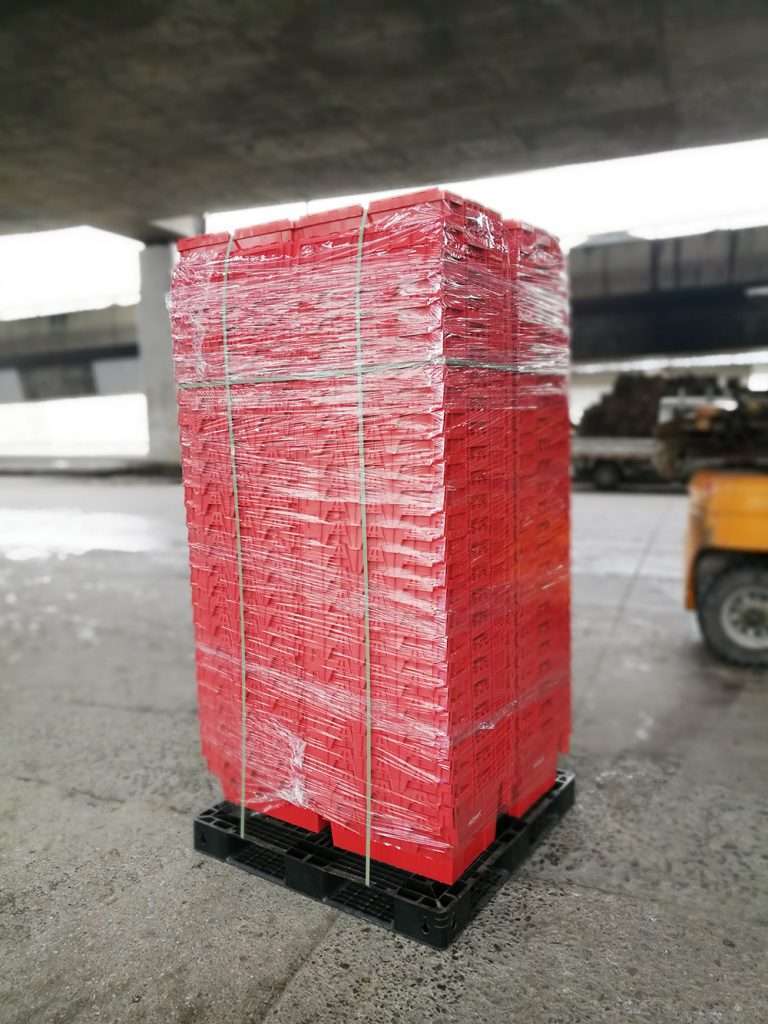Design the packaging method for your bulk plastic crates according to your specific requirement and make loading and transportation more convenient and safer.
This method involves loading the plastic crates directly into shipping containers for transportation. This is a good option for big and strong crates which can stack or nest on each other.
One of the primary benefits of container packaging is its space-saving nature. By utilizing the full capacity of the shipping containers, the available space is maximized, allowing for optimal use of transportation resources. This results in higher container utilization rates and reduced shipping costs per unit of product. Additionally, the absence of excessive packaging materials minimizes wasted space within the container, allowing for more efficient packing and potentially increasing the number of crates that can be transported in a single shipment. This makes the shipping cost lower per unit. And eliminating intermediate handling and packaging steps reduces labor and material costs associated with packaging, leading to overall cost savings.
Another advantage of container packaging is the significant time savings it offers. By bypassing intermediate handling and packaging processes, the crates can be loaded directly into the shipping containers, reducing overall handling time and minimizing the risk of damage or mishandling. This streamlined approach allows for quicker loading and unloading, expediting the transportation process and ensuring timely delivery of the crates to their destination.

It is an effective method for securing plastic crates during transportation. By placing them inside paper cartons, the crates are protected from damage caused by impacts or friction. This method is particularly useful when dealing with small crates and collapsible crates.
The use of carton packaging is particularly beneficial when dealing with small plastic crates or collapsible crates. These types of crates may have more intricate designs or movable parts, which can be better protected by the additional layer of carton packaging. The cartons help maintain the structural stability of collapsible crates and prevent any potential damage to hinges or locking mechanisms. For small crates, the cartons provide an added level of protection against external pressures, reducing the risk of deformation or breakage.
Furthermore, carton packaging offers ease of handling and storage. The standardized size and shape of the cartons allow for efficient stacking, both during transportation and warehousing. This helps optimize space utilization and facilitates the handling process, making it easier to load and unload the crates. Additionally, the cartons can be easily labeled or marked for identification purposes, improving inventory management and traceability.
Another advantage of carton packaging is its versatility. The paper cartons can be customized to accommodate different crate sizes and shapes, ensuring a snug fit and optimal protection. They can also be designed with features such as handles, perforations, or tear strips for easy opening and convenient handling. This flexibility allows for efficient and secure packaging of various types of plastic crates, adapting to specific requirements and ensuring the crates remain intact and protected throughout the transportation process.

Pallet packaging is a widely adopted and efficient method for transporting plastic crates. This technique involves arranging the crates on pallets and securing them with stretch film or shrink wrap. This packaging method offers several benefits, including enhanced durability, stability, and protection during transit.
One of the key advantages of pallet packaging is its ability to provide a robust and stable foundation for the crates. By stacking the crates on pallets, a solid base is created, ensuring that the load remains secure and well-balanced. This prevents the crates from shifting or toppling over during handling and transportation, reducing the risk of damage or accidents.
Pallet packaging offers convenience in terms of loading and unloading as well. The standardized dimensions of pallets allow for efficient handling and compatibility with various types of transportation equipment, such as forklifts or pallet jacks. This streamlines the process of loading and unloading the crates, saving time and effort. Moreover, the palletized configuration facilitates easier storage and warehouse management, as the crates can be neatly stacked and organized, optimizing space utilization.
Furthermore, pallet packaging provides an excellent solution for logistics and supply chain management. The standardized size and shape of pallets enable easy integration into automated systems and transportation networks. Palletized loads can be efficiently loaded onto trucks, ships, or aircraft, simplifying the handling and tracking of shipments.

We are dedicated to delivering packaging solutions that prioritize safety, reliability, and cost-effectiveness for our valued customers. With our commitment to excellence, you can have complete peace of mind knowing that your products are in good hands. Contact us now to talk about your packaging idea.
Copyright© 2023 VE PLASTICS. All Rights Reserved